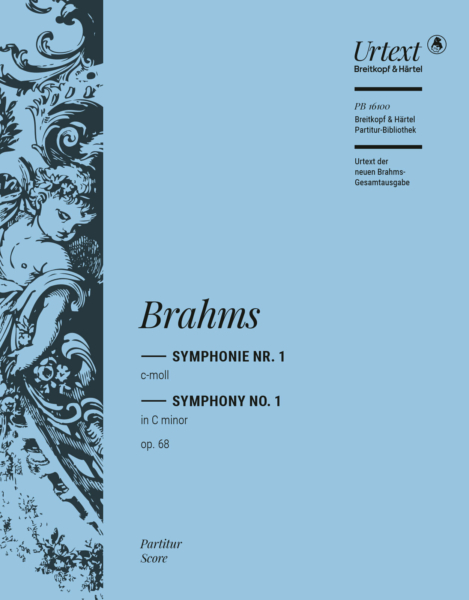Johannes Brahms (1833–1897) Symphonie Nr. 1 c-moll op. 68
Urtext der neuen Brahms-Gesamtausgabe herausgegeben von Robert Pascall [Orch] Dauer: 45'
2.2.2.2.Kfg – 4.2.3.0 – Pk – Str
Die Studien-Edition (Studienpartitur) ist beim G. Henle Verlag erhältlich.
Nachdem Sie die gewünschten Ausgaben in den Warenkorb gelegt haben, können Sie dort die benötigte Stückzahl bei Bedarf noch anpassen.
Johannes Brahms beendete seine erste Symphonie im September und Oktober 1876 in Lichtenthal bei Baden-Baden. Die Uraufführung fand am 4. November 1876 in Karlsruhe unter Leitung von Otto Dessoff statt. Brahms dirigierte das Werk daraufhin mehrfach selbst. Nach grundlegender Umarbeitung des zweiten Satzes erschien die Symphonie 1877 erstmals bei Simrock mit Partitur, Stimmen und als Klavierarrangement im Druck. Die vorliegende Ausgabe legt als Hauptquelle den Erstdruck der Partitur und darüber hinaus das zu drei Sätzen erhaltene Autograph sowie Kopistenabschriften zugrunde.
„Was kann man zum Lobe dieser Neuausgabe mehr sagen, als dass sie außerordentlich leserfreundlich und in jeder Hinsicht willkommen sind.“ (Das Liebhaberorchester)
| 1. Un poco sostenuto – Allegro – Meno allegro |
| 2. Andante sostenuto |
| 3. Un poco allegretto e grazioso |
| 4. Adagio – Più andante – Allegro non troppo, ma con brio – Più allegro |










 Blättern
Blättern